John Hurrell – 2 March, 2022
These are extraordinary works, made mostly from studio scraps. Lee's oddly seductive, intricate, multi-layered ‘flowers' delight through their delicate complexity, teasing the moving viewer as the curved transparent forms obscure and obstruct while also revealing and exposing. The tambourines at their core have had their original leather membranes removed to be replaced by taut facecloths—their fibrous textures cleverly accentuated by dry-brush painting.
Seven exquisite wall reliefs are being presented by London-based artist, Paul Lee, in this his third show at Michael Lett. Outward projecting, filmy assemblages made with small tambourines, wire gauze, cut up flannels, painted soft drink cans and muslin rhythmically stencilled with sprayed circular tambourine jingles, these undulating, bulbous abstract sculptures—with peculiar angles—can be interpreted as blurry helmeted heads or the overlapping petals and moving leaves of large flowers.
Or disembodied private parts beneath layered sheer apparel. For these mysteriously vague constructions are also erotic in the Marshall McLuhan sense of the medium is the massage. By looking through Lee’s gauzy materials your body—via your eye—is intimately caressed and fondled. Almost at a subliminal level, they generate ocular pleasure that then silently moves down to your southern regions. With the witty inclusion of a percussive instrument they celebrate the unrelenting power of desire.
These are extraordinary works, made mostly from studio scraps. Lee’s oddly seductive, intricate, multi-layered ‘flowers’ delight through their delicate complexity, teasing the moving viewer as the curved transparent forms obscure and obstruct while also revealing and exposing. The tambourines at their core have had their original leather membranes removed to be replaced by taut facecloths—their fibrous surfaces cleverly accentuated by dry-brush painting.
Whilst overtly gorgeous and sumptuous in their variations of texture, hot but fragile colour and minutely gridded translucency, these hovering, highly sensual, works also surprise in their morphologies. The arabesque forms that emerge when viewed from either side are not what you’d expect while in a directly frontal position.
In that sense they are immensely thrilling. They transform themselves into other beckoning beings, sentient creatures (part botanical; part zoological) that—despite their bizarre elongations and compressions—through rich ethereal suggestion, still allure.
Not fetishistic, Lee’s sculptures emphasise sensation of discrete parts placed in juxtaposition, stressing looking without comprehension. Unlike say cubist sculpture they don’t cohere, for this lack of resolution emphasises the eye’s trajectory tracking detail, clinging to surface, and not grasping totality. Wonderfully the spatial fragmentation enhances—is never counterproductive. The fascination never dissipates.
John Hurrell
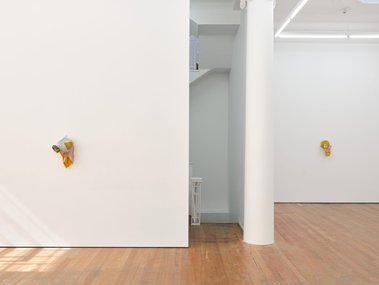


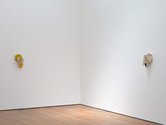

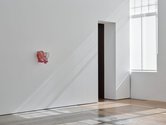



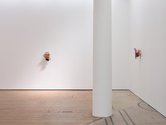
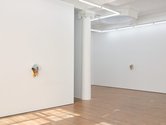

 Two Rooms presents a program of residencies and projects
Two Rooms presents a program of residencies and projects Advertising in this column
Advertising in this column



This Discussion has 0 comments.
Comment
Participate
Register to Participate.
Sign in
Sign in to an existing account.